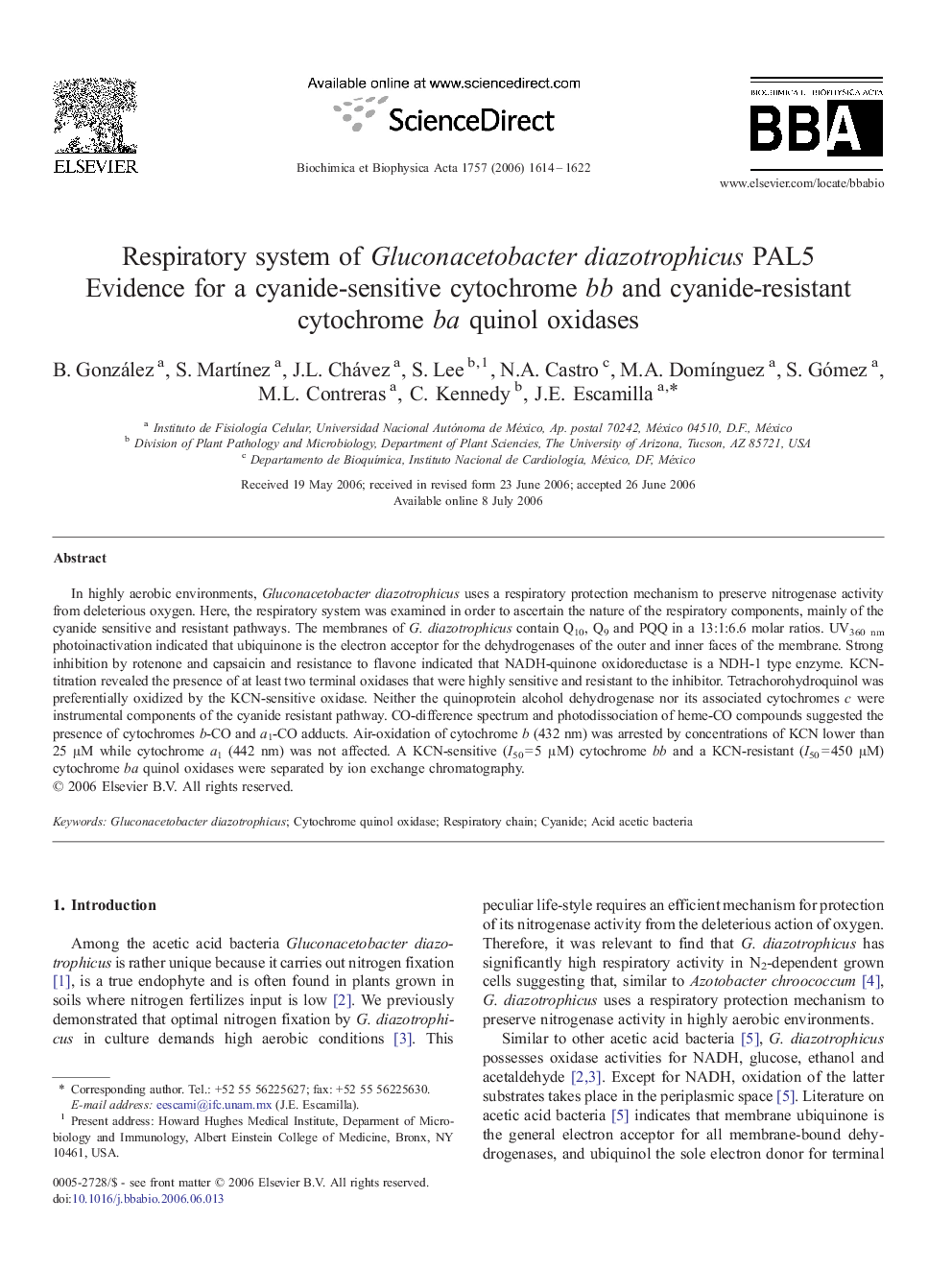| Article ID | Journal | Published Year | Pages | File Type |
|---|---|---|---|---|
| 1943612 | Biochimica et Biophysica Acta (BBA) - Bioenergetics | 2006 | 9 Pages |
In highly aerobic environments, Gluconacetobacter diazotrophicus uses a respiratory protection mechanism to preserve nitrogenase activity from deleterious oxygen. Here, the respiratory system was examined in order to ascertain the nature of the respiratory components, mainly of the cyanide sensitive and resistant pathways. The membranes of G. diazotrophicus contain Q10, Q9 and PQQ in a 13:1:6.6 molar ratios. UV360 nm photoinactivation indicated that ubiquinone is the electron acceptor for the dehydrogenases of the outer and inner faces of the membrane. Strong inhibition by rotenone and capsaicin and resistance to flavone indicated that NADH-quinone oxidoreductase is a NDH-1 type enzyme. KCN-titration revealed the presence of at least two terminal oxidases that were highly sensitive and resistant to the inhibitor. Tetrachorohydroquinol was preferentially oxidized by the KCN-sensitive oxidase. Neither the quinoprotein alcohol dehydrogenase nor its associated cytochromes c were instrumental components of the cyanide resistant pathway. CO-difference spectrum and photodissociation of heme-CO compounds suggested the presence of cytochromes b-CO and a1-CO adducts. Air-oxidation of cytochrome b (432 nm) was arrested by concentrations of KCN lower than 25 μM while cytochrome a1 (442 nm) was not affected. A KCN-sensitive (I50 = 5 μM) cytochrome bb and a KCN-resistant (I50 = 450 μM) cytochrome ba quinol oxidases were separated by ion exchange chromatography.
